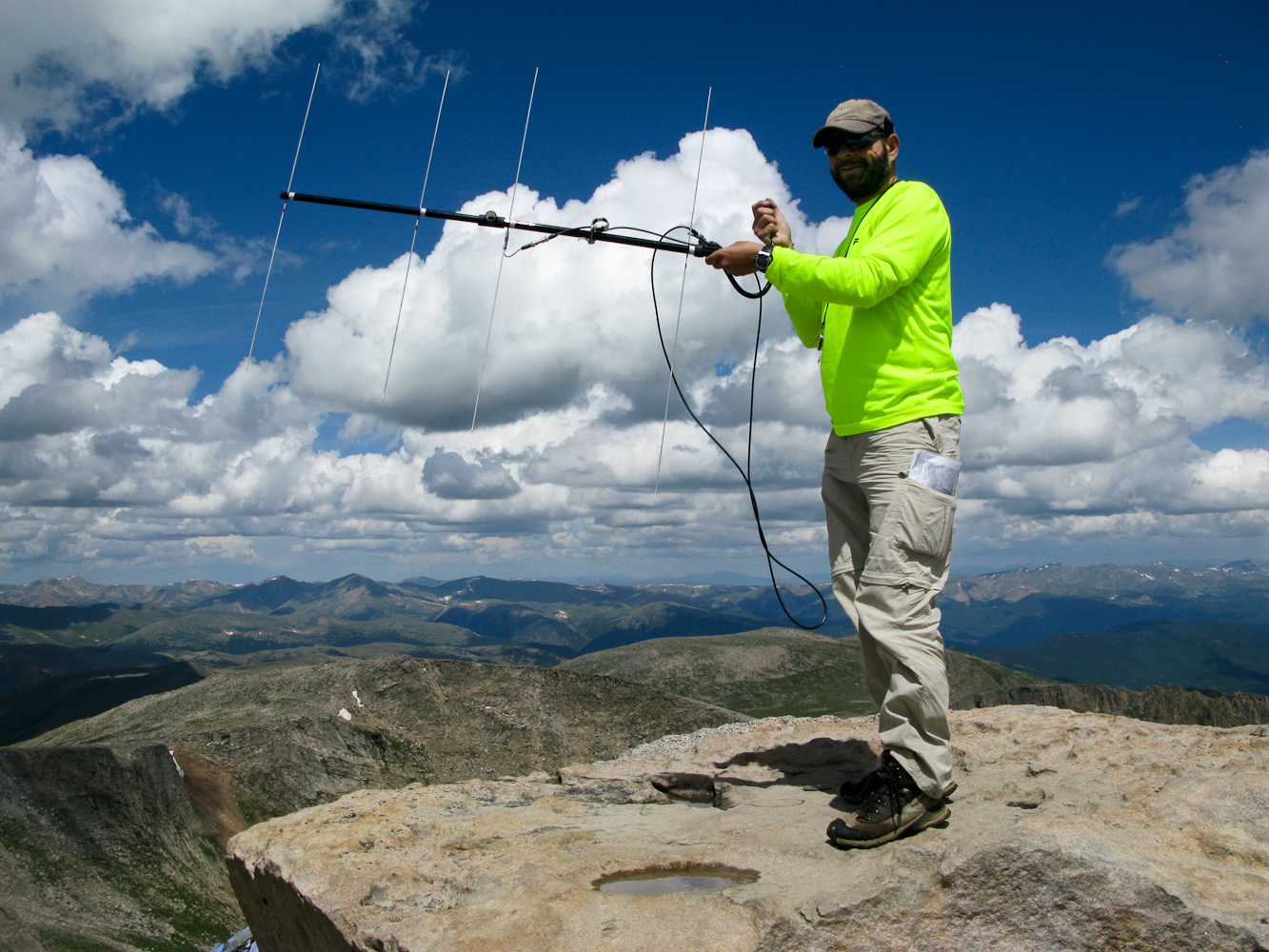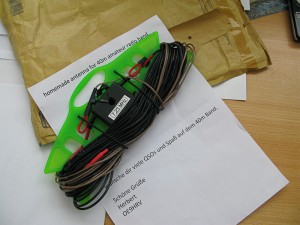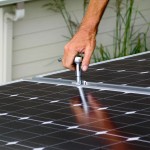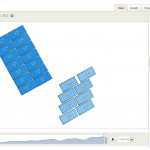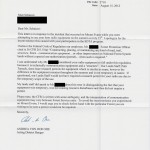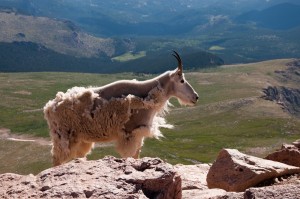Author Archive
 10-10-10 Event-Happy B-day WØC-SOTA
10-10-10 Event-Happy B-day WØC-SOTA

WG0AT/Steve
May 1st, 2010 – WGØAT/Steve sent a CQ from Mount Herman in Colorado and thus inaugurated the birth of Summits On The Air (SOTA) in WØ land with 33 CW contacts around the world.
Fast forward to today, Steve is still sending CQs from Mount Herman (WØC/FR-Ø63), and other peaks, almost on a daily basis but he also inspired countless hams (incl. yours truly) to join a growing bunch of people who love the outdoors and combine their hiking activities with their radio hobby.
Some statistics… during the last 10+ years the Colorado Association (WØC) grew from:
- 219 initial (seed) summits to a total of 1797 qualifying summits
- a handful of Activators to ~180
- a few chasers to almost 200
These highly motivated men and women of all ages activated more than 7,400 summits, generated more than 40,000 points and 15 Mountain Goats (MG) – many of them double or even six-fold (thanks KXØR/George).
WØC Chasers worked over 90,000 stations around the world, generated almost 500,000 points and 33 Shack-Sloths.
To celebrate our 10th Anniversary1, WØC-SOTA is organizing a 10-10-10 Event2 with a challenge for Activators and Chasers alike.
Activator challenge: Activate 10 (or more) 10K (or higher) summits (in WØC) within 10 days.
Chaser challenge: Chase Activators on 10 different (or more) qualifying WØC summits (10K or higher) within the 10 days.
Event Date: We will kick-off the event in conjunction with the Colorado 14er event on August 7th, 2021 and conclude on August 16th.
Everybody is invited to participate. Plan your vacations and business-trips to Colorado accordingly. Block off these days in your calendar. Get in shape… repair your antennas and radios. It’s a once in a decade event 😉
There will be a ranking of all participants who meet the challenge. Photographer and new SOTA enthusiast Dan Oldfield (NØOLD) is generously donating a personalized and autographed print from his Colorful Colorado collection to each of the top 3 in both challenges.
More details will be announced as soon as they are hashed out on the WØC-SOTA Website (you can subscribe to get the latest updates) and the NA-SOTA group.

For the org. team
KØMOS/Matt
1 It’s actually the 11th Anniversary but the COVID-19 Pandemic and historic Wildfires in Colorado interfered in 2020.
2 All SOTA rules apply
 Yagi-Uda the III.
Yagi-Uda the III.
No, this is not the name of another royal baby… it’s about my third attempt to build a 2m antenna for my SOTA activations. In my earlier iterations I was unable to strike the balance between size/weight and usability.
What happened so far:
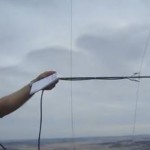 My first attempt to build a Yagi-Uda antenna was based on a design by Paul/KD5IVP. It worked, but had some crucial flaws for my endeavors. It was a 3-element antenna made out of piano wire and a carbon fiber arrow as a boom. Very small and lightweight indeed but in high winds/gusts the elements were flapping like a seagull during take-off. It’s demise came on it’s second outing… the arrow broke in half while bushwhacking up a mountain and I lost some of the piano wires in the woods. To read more about it and to see it in action check out this post.
My first attempt to build a Yagi-Uda antenna was based on a design by Paul/KD5IVP. It worked, but had some crucial flaws for my endeavors. It was a 3-element antenna made out of piano wire and a carbon fiber arrow as a boom. Very small and lightweight indeed but in high winds/gusts the elements were flapping like a seagull during take-off. It’s demise came on it’s second outing… the arrow broke in half while bushwhacking up a mountain and I lost some of the piano wires in the woods. To read more about it and to see it in action check out this post.
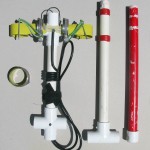 I then moved on to a tape measure 3-element antenna based on a design by Joe/WB2HOL. It worked well and accompanied me on several activations – even a few 14ers (Summits higher than 14’000 ft / 4267m). My main gripe with this antenna is that it is delicate to transport as well. The steel tape gets kinked easily since the antenna is strapped to the outside of my backpack. It’s rather easy to replace the director and reflector, but soldering the coax to the steel radiator is another story. It turned out that this design is also vulnerable to high winds and your arms start to feel the weight after a few minutes without support. You can see the antenna in action in this video, around 3:30 into the clip.
I then moved on to a tape measure 3-element antenna based on a design by Joe/WB2HOL. It worked well and accompanied me on several activations – even a few 14ers (Summits higher than 14’000 ft / 4267m). My main gripe with this antenna is that it is delicate to transport as well. The steel tape gets kinked easily since the antenna is strapped to the outside of my backpack. It’s rather easy to replace the director and reflector, but soldering the coax to the steel radiator is another story. It turned out that this design is also vulnerable to high winds and your arms start to feel the weight after a few minutes without support. You can see the antenna in action in this video, around 3:30 into the clip.
The one?
I continued my research for a suitable 2m Yagi-Uda which would fit my requirements:
- Lightweight (but sturdy enough to withstand high winds)
- Easy and save to transport
- Easy to build (even for me)
I eventually stumbled onto IZ2UUF’s Website – an Italian radio amateur who enjoys hiking and playing with radios as well. He designed an 4-element Yagi-Uda weighing only 80 grams (~2.9 ounces)!! All elements fit into the fiberglass boom (fishing rod) for easy transport with no matching network necessary. The description to build the antenna focused on the critical parts with excellent pictures to support the instructions.
Davide/IZ2UUF modeled the antenna with 4NEC2, a free antenna modeling software package. Since he shared his input file with me, I took the opportunity to download the free SW and to learn more about antenna modelling. After a few more e-mail exchanges with him I was convinced by his design and started to source all the parts.
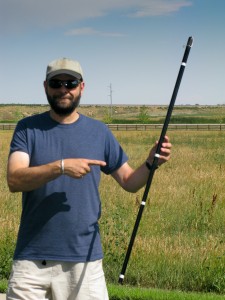 I did not have afiberglass fishing pole available and opted to use a plastic one I had lying around. Davide is using aluminum welding rods for his elements which I could not find at the desired length/diameter here in the US. I therefore ordered aluminum alloy 6061 rods instead (1/8″ x 6′ ) from a supplier in IL (for details see the resource section below). My build also differs in the connector (BNC instead SMA). All these changes resulted in a slightly heavier (194 g / 6.8 ounces) first version compared to Davide’s antenna. My boom alone is heavier than Davide’s complete antenna (96 g / 3.4 oz). However, I am planning to improve/reduce the weight in version two.
I did not have afiberglass fishing pole available and opted to use a plastic one I had lying around. Davide is using aluminum welding rods for his elements which I could not find at the desired length/diameter here in the US. I therefore ordered aluminum alloy 6061 rods instead (1/8″ x 6′ ) from a supplier in IL (for details see the resource section below). My build also differs in the connector (BNC instead SMA). All these changes resulted in a slightly heavier (194 g / 6.8 ounces) first version compared to Davide’s antenna. My boom alone is heavier than Davide’s complete antenna (96 g / 3.4 oz). However, I am planning to improve/reduce the weight in version two.
I had a chance to use the antenna over the week-end during the CO-14er event. All I can say so far is that it worked well and that the weight is not an issue at all… huge improvement to the tape-measure version.
For more pictures, a weight comparison and resources head over to my blog.
73, Matt/KØMOS
 On 40m at last… (Part I)
On 40m at last… (Part I)
Using a Buddipole antenna (BP) for my SOTA activations leaves me high and dry when it comes to the 40 m band. I was never able to build an efficient BP for these frequencies and received many ‘complaints’ that I never activate on 40m, thereby leaving out the ‘local’ chasers. This is going to change now…
Yesterday I received a package from my buddy and SOTA Mountain Goat Herbert/OE9HRV, containing a home brew double Bazooka for 7 MHz based on RG174 coax. Herbert is my go-to guy when it comes to antennas. On our joint SOTA activations in OE he always carries an impressive assortment of home brew antennas to the summits, and due to this weight I would NOT want to carry his backpack – seriously. To see some examples of his creations, check out his FLICKR stream and/or QRZ page.
I had not known about double Bazookas before being educated by Herbert. It’s an efficient and quiet single band antenna based on 50 ohm coax cable, with the shield split at the center and feed line attache to it. It can be used in a flat top or inverted vee configuration – the latter more suitable for SOTA. To save on weight, Herbert made it out of RG174 with a BNC connector, and used a wire-winder to create a small and easy to manage package. The final antenna is around 310 g (~ 11 ounces) and about 25 cm x 8 cm (~ 9.5″ x 3″ ). With any luck you might hear me on 40m over the week-end.
For more pictures head over to my blog.
73, Matt/KØMOS
 Solar Powered Ham Shack
Solar Powered Ham Shack
Finally everything fell in place… my shack is running on solar power only. An idea/project I have been pursuing for years but the circumstances were never perfect… until this July. Last fall, a hailstorm took care of the roof and I had to replace it. In July I was able to secure a large chunk of money from our City which is offering a (very) limited number of rebates for Photovoltaic (PV) installations. Together with the federal tax credits it will put the ROI within my life expectancy. Good enough for me.
The complete system is a grid tied, 5.5 kW system – 22 panels organized in two arrays (one south and one west facing). Each panel has a microinverter to optimize production and to add some ‘intelligence’ to the system. Monitoring and trouble shooting is a breeze. I can literally see when a bird poops on a panel and degrades my production 🙂
Since my shack consists only of a Yaesu FT-817, I am using the excess energy in the rest of the house. It should produce over 100% of our typical electricity usage per year if everything goes according to plan – I guess time will tell.
Here a short clip of the installation:
Please add your questions and comments through Youtube.
 Antenna Restrictions on Mt. Evans? The Conclusion
Antenna Restrictions on Mt. Evans? The Conclusion
I finally received a letter from the Clark Creek Ranger District regarding my encounter on Mt. Evans (read the first part of the story if you are not familiar with it). It took me almost six weeks and several e-mails to get an official statement from the Ranger District. I guess an underfunded federal agency has more pressing issues to deal with.
The good news is that it was an over-eager FS employee who kicked me off the mountain.
The bad news is that, according to the letter, the Federal Code of Regulation [36 CFR 261.10(a)], which applies to communication equipment, is written with some built-in ambiguity and might be interpreted differently in other Forest Service units.
Well, I will deal with another interpretation if and when I run into another issue. The Clear Creek Ranger District interpretation however makes sense to me – chapter closed!
I really appreciate the clarification.
Read the entire letter by clicking on the thumbnail to the right.
That’s my last post from Mt Evans but there are two more pictures I wanted to share. The first one was shot at the Summit Lake trail-head early in the morning. The trail starts on the right side of the picture, goes up the ridge to Mt. Spalding and over to Mt. Evans.
The second picture is from a close encounter of the third kind… well, not quite but is was remarkable. This unflinching mountain goat approached me. The picture is shot with a 52mm lens, not a tele-photo lens. He came up to me at arms lengh… too close for my taste. I normally try to keep a save distance between wild animals and myself, but this guy was not shy at all. Since I had never heard about occurrences of rabies in mountain goats and since I received some goat combat lessons earlier in the year (courtesy of Rooster) on my trip to Mt. Herman, I took the chance to take some real close-up shots instead of retreating.
73, Matt/KØMOS
 Antenna Restrictions on Mt. Evans?
Antenna Restrictions on Mt. Evans?
I activated Mt. Evans for Summits on the Air (SOTA) on July 15th. I took the route from Summit Lake to the top early in the morning since thunderstorms were in the forecast for the afternoon. I had the peak to myself for almost half an hour which was unexpected, considering that there is a road all the way to the top. I setup my vertical Buddipole for 20m and started my activation – so far nothing out of the ordinary besides the bad band conditions due to the recent CME.

I was talking to ACØA in Kansas when I spotted a National Forest Ranger running up the path from the parking lot. I could not understand what he was saying since I was
distracted by my ongoing QSO and the lack of oxygen combined with his running up the mountain made his signal about a 22, with highly distorted audio.
He arrived at the summit breathless and stood next to me, courteous enough to let me finish my QSO (or just to catch his breath?). He then introduced himself and informed me that I have to take down the antenna immediately.
My first thoughts were that the antenna was considered some sort of a safety hazard for other visitors but NO. The reason is, he informed me, that you cannot build a structure on Nation Forest land without a permit. Sounds like a sensible rule to me…. who wants to see cabins etc. erected on public land everywhere. I argued that my antenna can hardly be considered a structure and my short survey among the few visitors on the summit (~10 people) came to the same conclusion – nobody considered my antenna a structure but he insisted. Furthermore he instructed me to drive to the Clear Creek Ranger District HQ in Idaho Springs to get a permit. Needless to say that I was not planning to make a ~60 mile round-trip to get a permit for my activities. I already had enough contacts for my Mt. Evans SOTA activation and the fact that I had planned another activation for later in the day I did not want to waste my time arguing and started to pack up. Luckily I had my tape-measure YAGI with me for my next activation and I was hoping it would pass the NOT BEING A STRUCTURE test by the National Forest (to make sure I did not ask).
I tried to follow up with the person in charge for the Clear Creek Ranger District… she is on vacation. Sure glad I did not drive all the way to Idaho Springs.
GOOGLing, I found Forest Rules You Need to Know, published by the Secretary of Agriculture. On page two, under the chapter OTHER PROHIBITED FACTS it indeed prohibits “Constructing, placing, or maintaining any kind of communication equipment without a special use authorization“. Again, that makes sense to me to avoid that every Tom, Dick and Harry sets up his own repeater on public land… it does however not make sense to me for a temporary, mobile/portable antenna as I was using.
It would certainly put a damper on SOTA activations and the upcoming 14er event. I am almost certain that on Field Day a lot of antennas go up on NF land.
I would be interested in your experience and/or opinion and I am planning to follow up with the Clear Creek Ranger District. Maybe I was just dealing with an overly eager Ranger? Stay tuned…
Matt/KØMOS
